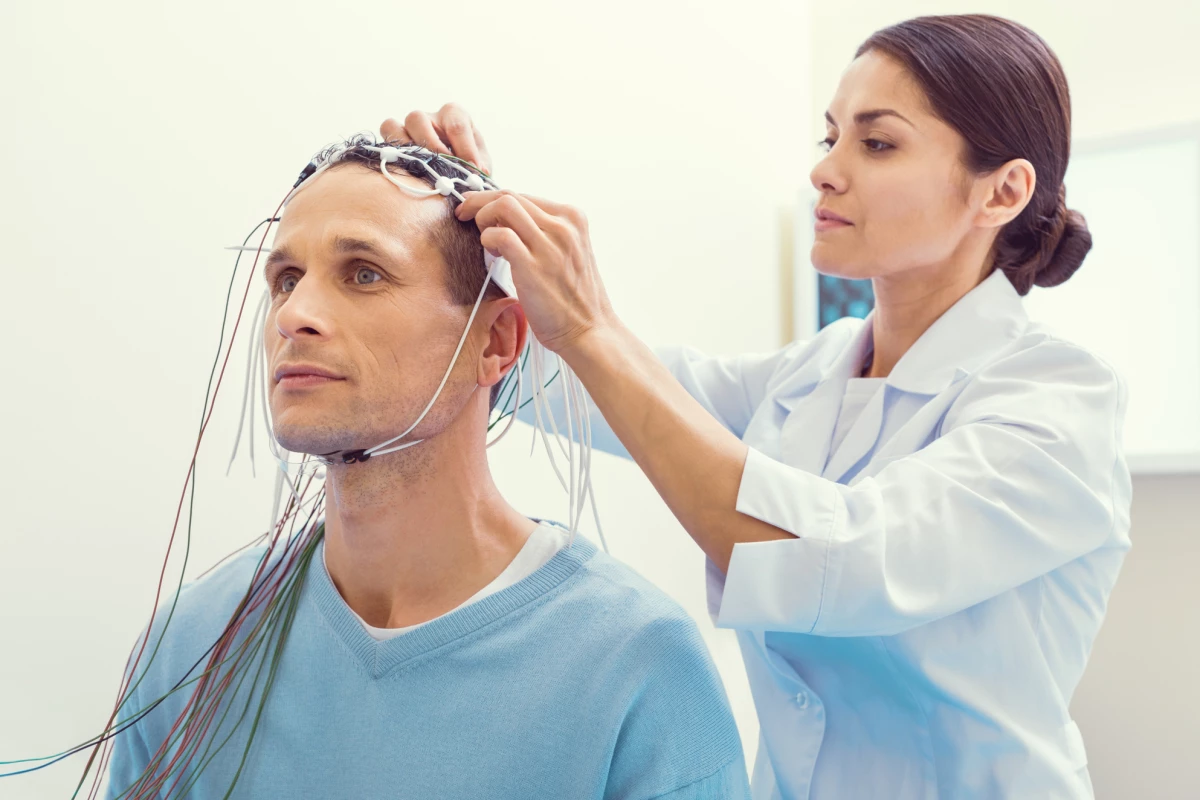A robust new study investigating brain activity patterns in schizophrenia patients and their siblings is suggesting a specific brain “signature” could detect the condition in subjects before clinical symptoms appear. The study also hypothesizes modulating brain activity as a way to treat the condition.
Researchers have studied the novel electrical brain activity of schizophrenia patients through non-invasive resting-state electroencephalography (EEG) for several years. Studies have demonstrated people with schizophrenia display notably abnormal patterns of EEG microstates.
EEG microstates have been dubbed “atoms of thought,” and they represent brief patterns of neuronal activity. EEG microstate activity is generally divided into four classifications – A, B, C and D. Each class refers to particular patterns of EEG activity in specific regions of the brain.
A 2016 meta-analysis comprising 15 years of studies investigating EEG microstates and schizophrenia found, compared to healthy control subjects, the brains of schizophrenia subjects spent much more time in EEG microstate class C, and much less time in microstate class D.
The new research set out to investigate whether these abnormal EEG microstates could be detected in healthy siblings of schizophrenia patients. Although schizophrenia is a notably polygenic condition, meaning it is not caused by a single genetic variant, siblings of people with schizophrenia are much more likely to develop the condition.
The study conducted EEG examinations on 101 schizophrenia subjects, 43 unaffected siblings, and 75 subjects with no family history of schizophrenia. Confirming prior research, the study saw the same previously detected class C and D microstate abnormalities in the schizophrenia subjects.
The study did also detect class C and D microstate abnormalities in the unaffected siblings of schizophrenia subjects. The researchers hypothesize this finding suggests the novel class C and D microstate “signature” could be a reflection of the genetic components underpinning schizophrenia.
Perhaps most interesting were the differences in microstate EEG activity between schizophrenia subjects and their siblings. Those healthy siblings displayed higher durations of microstate class B activity. Janir Ramos da Cruz, one of the researchers working on the study, suggests this increase in class B brain activity could be a compensatory signal helping protect from the genetic predispositions leading to schizophrenia.
“This could be a protection mechanism that prevents the imbalance in microstates class C and D from creating functional problems,” says Ramos da Cruz.
A second part of the study looked at EEG microstate activity in newly diagnosed schizophrenia patients, following their first episode of psychosis, compared to long-term diagnosed patients. The data revealed the novel abnormal class C and D microstate pattern was apparent in both cohorts.
“This suggests that these microstate abnormalities occur right at the beginning of the disease,” adds Ramos da Cruz.
All of these findings ultimately suggest EEG microstate analysis may offer clinicians a way to discriminate those most at risk of developing schizophrenia. The potential compensatory aspect of microstate class B in unaffected siblings will need to be explored further in future studies, however, this compelling discovery has more than mere diagnostic implications.
Co-senior author on the new study, Michael Herzog, suggests microstate activity can be modulated using a variety of techniques, from neurofeedback to transcranial magnetic stimulation. So hypothetically, it is possible schizophrenia could be treated, or prevented, by altering brain activity patterns.
“If we can improve even just the symptoms by a small factor, that would still be a major relief for the patients,” says Herzog.
The new study was published in the journal Nature Communications.
Source: EPFL




